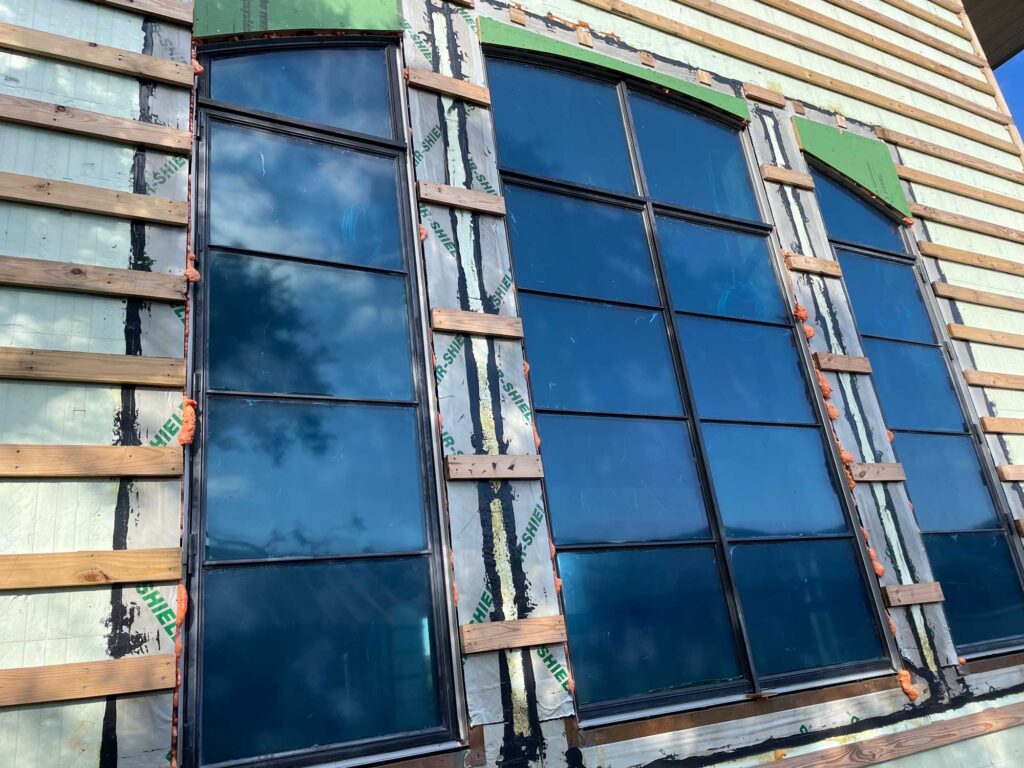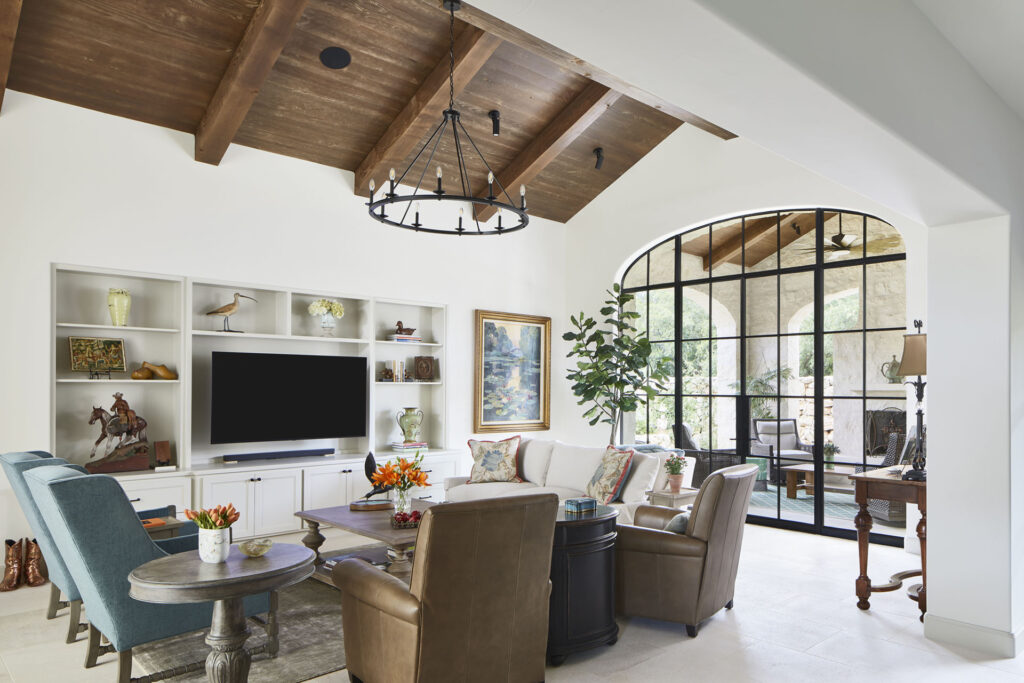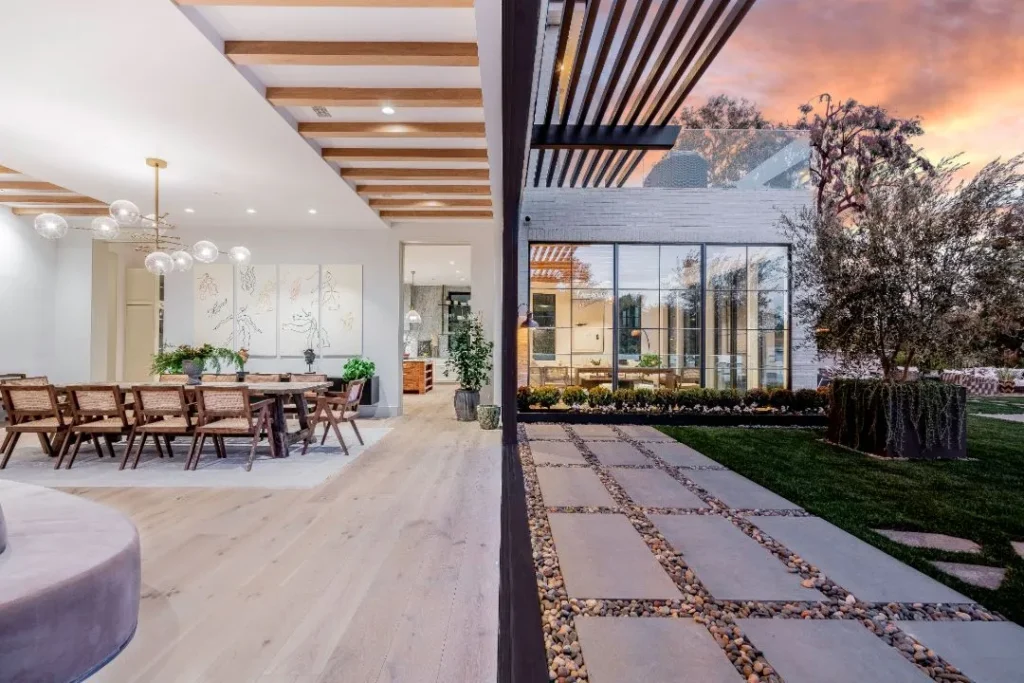Window and door systems form an integral part of what architects and contractors refer to as the ‘building envelope’ – the barrier that prevents air, moisture and heat from transferring into or out of a building.
Integrity of the building envelope is essential for ensuring it is sufficiently airtight and energy efficient, but also for preventing long-term issues with condensation and associated problems like mold and mildew, especially in residential settings.
Since windows and doors represent the interface between indoors and out, they have the ability to contribute positively – or negatively – to the integrity of the building envelope depending on their design, including whether or not they are thermally broken, the u-values of the glass, and the nail fin system that fixes the window frame into the wall.
In this blog, we’ll be looking specifically at the role of nail fins in architecture and construction – what they are, why they matter, and how we at Renaissance Genuine Solid Bronze approach their design and installation for a superior building envelope.

What is a nail fin?
A nail fin is a thin bracket attached to a window frame, designed to attach the window frame to the wall sheathing with screws, for a completely watertight seal.
Nail fins can be integral, which means they are physically part of the window frame (this is typical for uPVC windows), or non-integral, where the nail fins are separate from the window frame itself, and can be removed if not required (nail fins are only used during the construction phase of a project, not for replacement windows – more on this later).
Metal and wooden windows – including our solid bronze window and door systems – typically have non-integral fins. We make our nail fins from anodised aluminum, because it has good dimensional stability, ensuring a tight connection into our bronze window frame extrusions, and also because it is readily machinable, making it easy to work with on site.

What is the purpose of a nail fin?
Nail fins are a component that allows window and door systems to be fully integrated into a building’s shell or weathertight envelope.
Windows without nail fins are typically installed on top of the wall finish and sealed in place with a line of waterproof caulk – but even though the caulk will stop the window from leaking, the render or stucco underneath can act like a wick that draws moisture in.
A nail fin forms an impermeable barrier that prevents this from happening. Once attached to the building sheath with mechanical fixings, and sealed using appropriate weatherproof products, the nail fin effectively becomes part of the ‘skin’ of the building, providing a completely airtight and waterproof barrier to the elements.
Nail fins are fixed before the external finish of a property – such as render, timber or stone cladding – is completed, so they’re invisible once the building is finished.
Do all windows have nail fins?
No. Windows without nail fins are installed by drilling through the frame itself directly into the masonry. This is a common process in the construction industry, especially for replacement windows in existing dwellings.

What are the benefits of nail fin systems?
Nail fin systems have a number of key benefits both in terms of practicality, weatherproofing and also building aesthetics.
Improved weatherproofing
Installing a window or door using nail fins means that the junction of the aperture and the window itself is completely flush, sealed and also protected from the elements by the external shell of the building, whether that’s brick, stone or timber cladding, or even render. Effectively, the window structure is embedded into the building envelope, with virtually no risk of moisture ingress even over long periods of time, or if the external finish is damaged.
Support for large windows
Nail fin systems do an excellent job of distributing the weight of large, heavy window frames, making them easier to install and extending their lifespan.
They provide a degree of tolerance when fitting a window or door frame into its aperture, holding the frame securely in place while it is shimmed up for a perfect, centered fit – a process that’s notoriously tricky for large scale window installs.
At Renaissance Genuine Solid Bronze, our nail fins have an exterior and an interior nail fin flange, allowing the frame to be secured at two points all the way around for even weight distribution capable of retaining structural integrity for generations.
Our windows also have a unique base block system that works in conjunction with our nail fin system to support the weight of the window and create space for condensate egress.

Narrow sightlines
One of the main reasons architects choose metal windows is because they offer much thinner profiles than wooden or uPVC frames, creating a more elegant aesthetic and maximizing the impact of natural light and surrounding views.
In a block frame with no nail fin, all the stress of holding the window in place is borne by the frame itself, so the frame necessarily must be thicker and heavier. Nail fin systems mean that all the heavy lifting is done by a component you can’t see, since it’s hidden behind the wall finish. This facilitates the narrowest possible sightlines because the window frame itself only has one job to do – to support the weight of the glass.
Invisible fixing
Another key advantage of using nail fins is that they allow window and door frames to fixed in place invisibly for a clean, flush finish. Because the nail fin is installed behind the final wall finish, it’s possible to achieve incredibly crisp lines with no unsightly caulking and no need for the wall finish to overlap the edge of the window frame.

What’s unique about Renaissance GSB nail fins?
We offer two nail fin options – our straight or standard nail fin, and our signature Z-Fin nail fin. Straight nail fins are the most common design and allow the window frame to be installed flush with the rough frame.
Our Z-Fin option has been designed by us to give architects more freedom to create deeper window reveals on properties with very thick walls, or when their vision is to create deep ‘shadow boxes’ that add interest to the overall appearance of a property, especially on historic or period-inspired builds.
The Z-Fin allows the window to be set back further from the rough frame, and eliminates the need for double framing during the construction phase – a process that involves much manipulation of the waterproofing membrane, and creates channels where unwanted moisture can gather.
Our windows also sit on base blocks with integrated water diverters and copper drain pans that serve to catch any condensation that develops on the glass and channel it away from the building envelope to the outside – this feature is unique to our windows.
If you’d like to find out more about our solid bronze window systems, including our advanced weatherstripping and thermally broken technology, get in touch.


